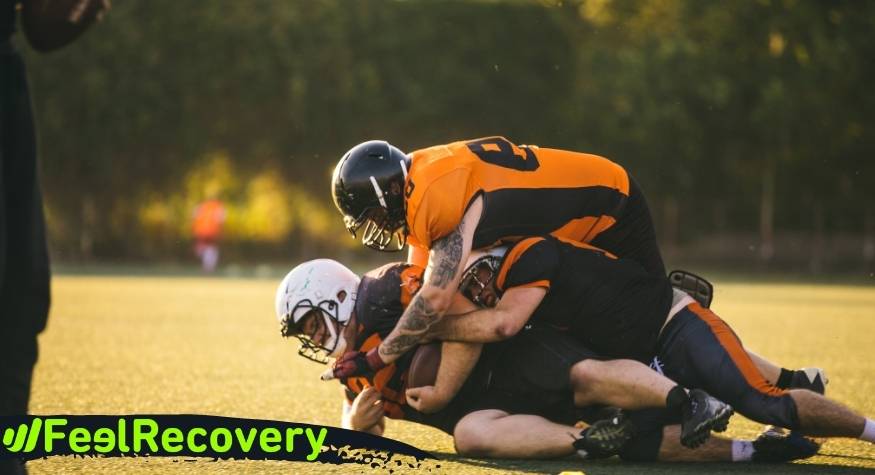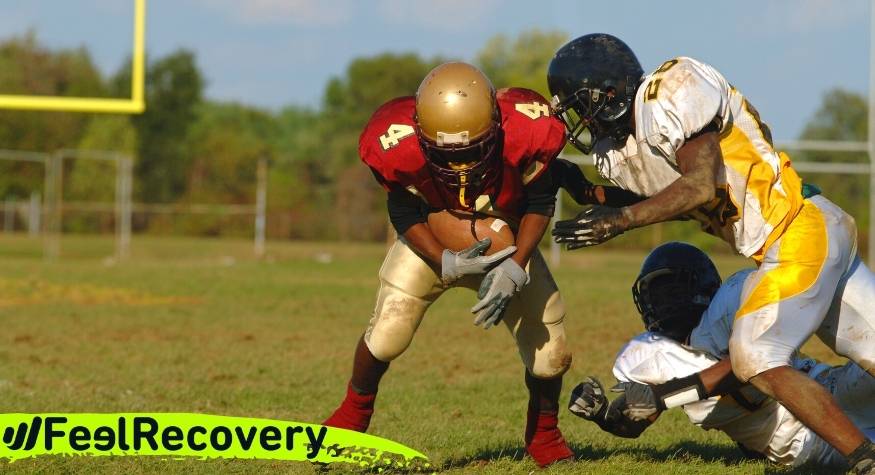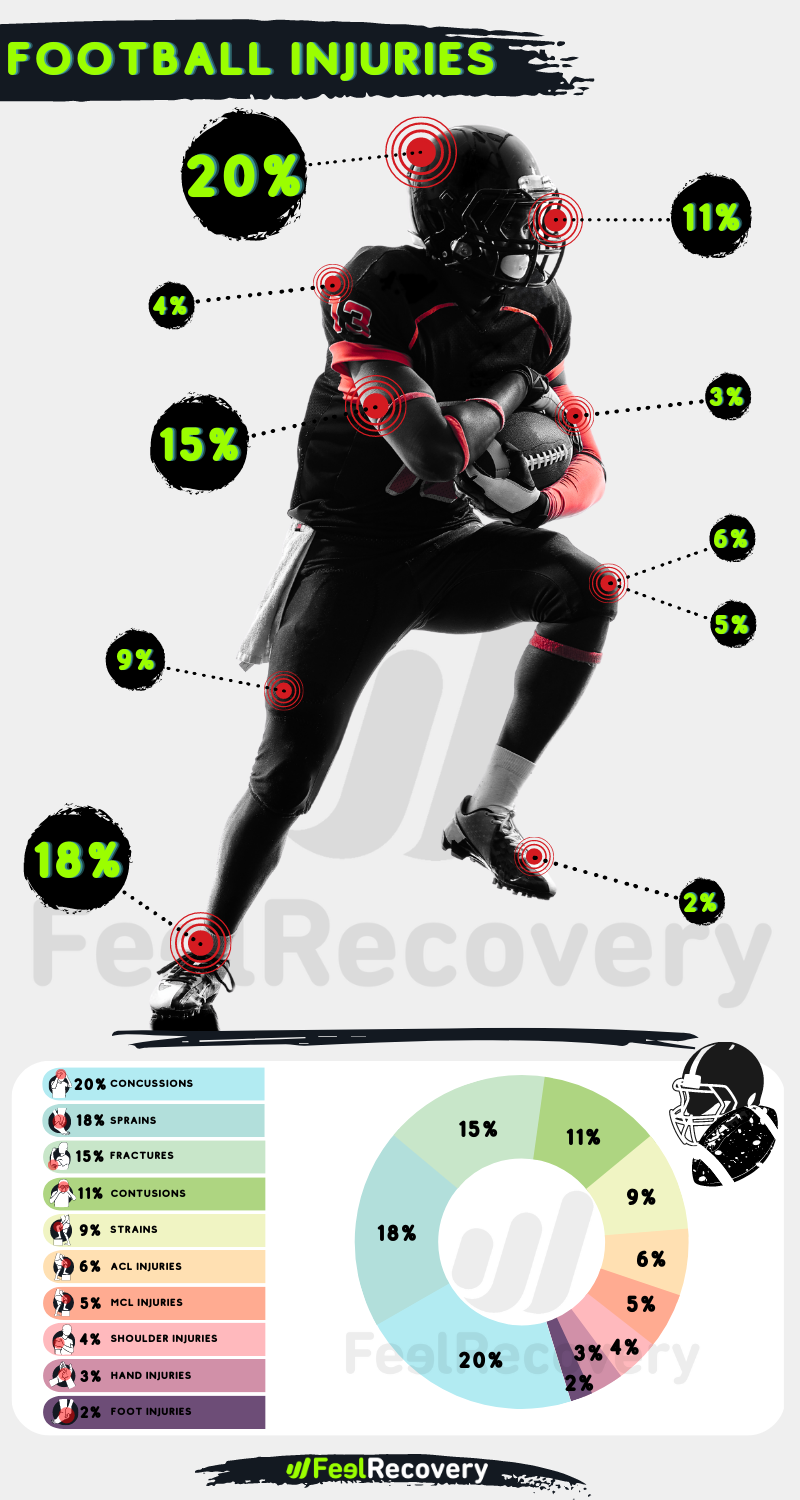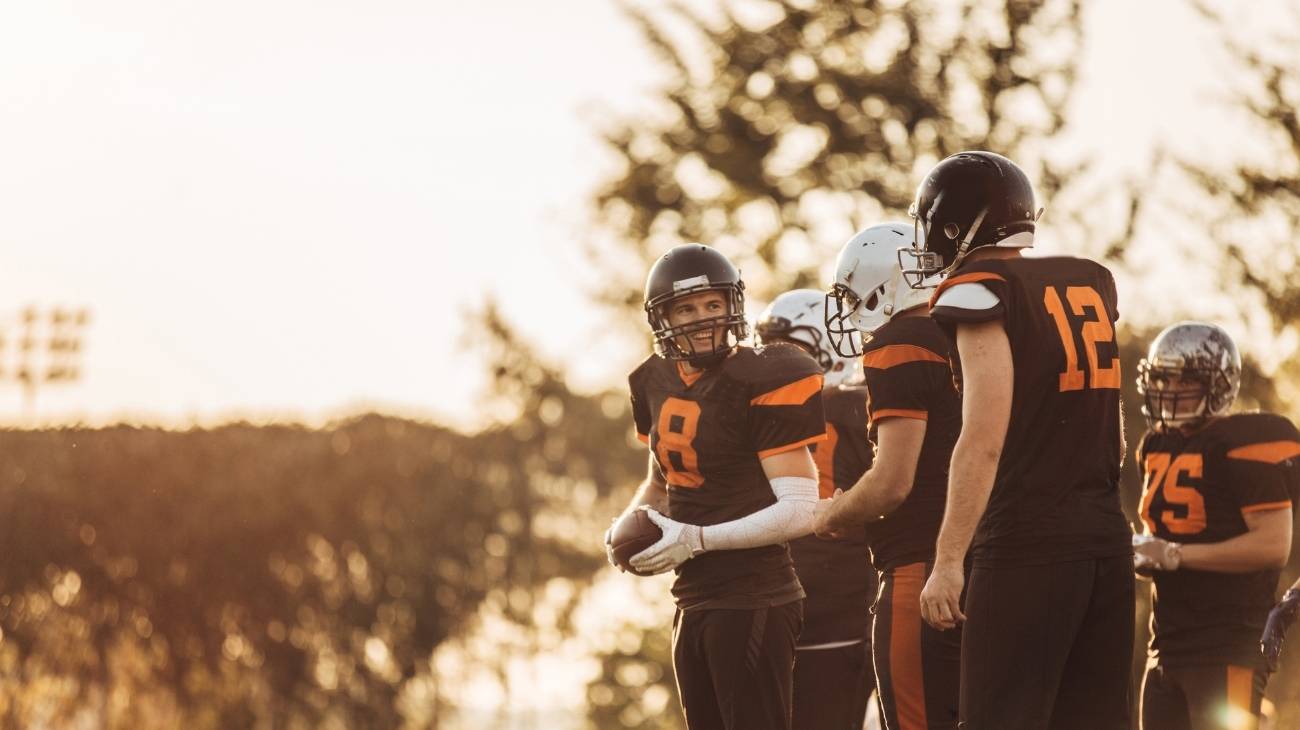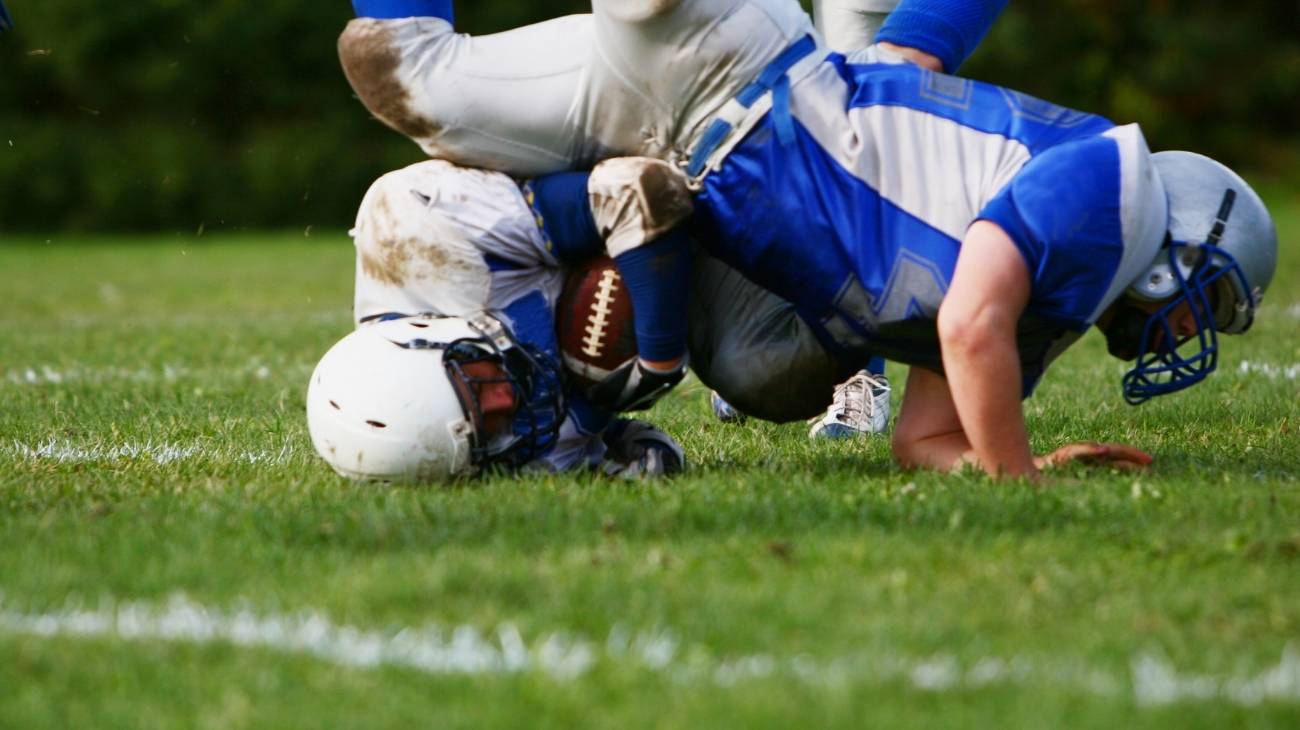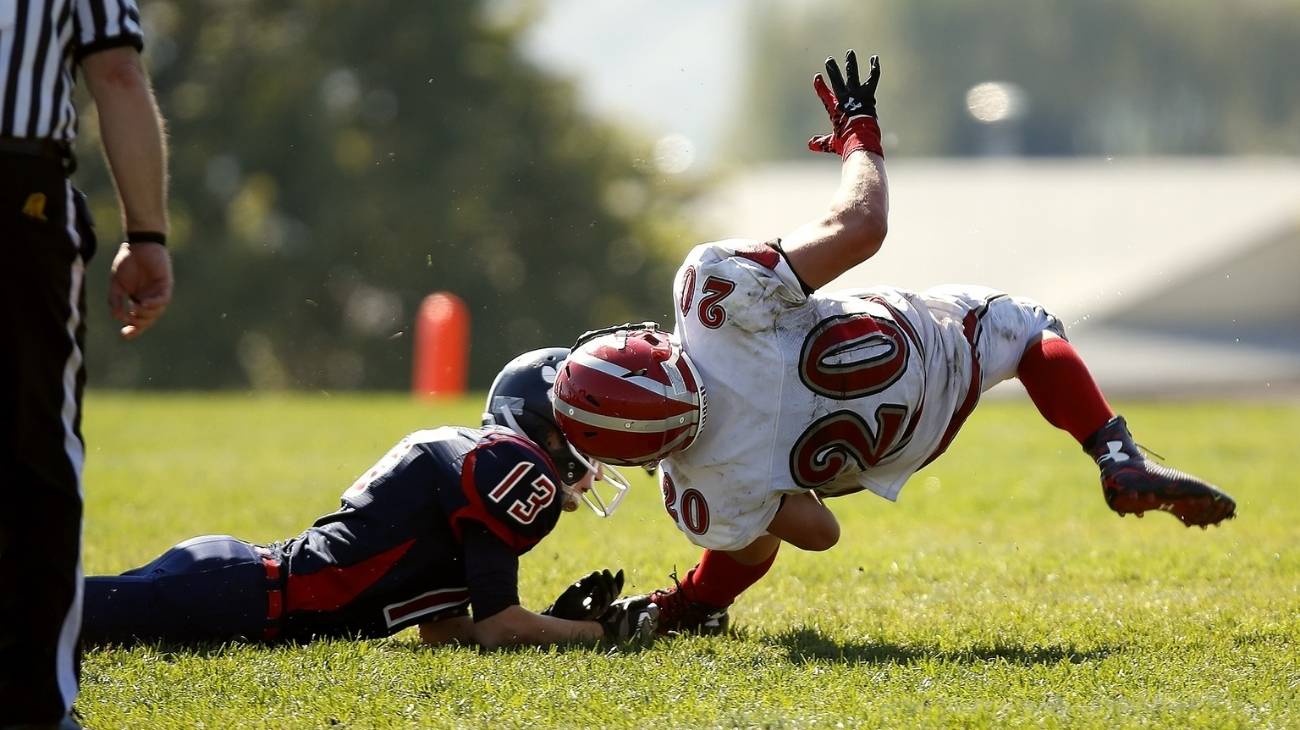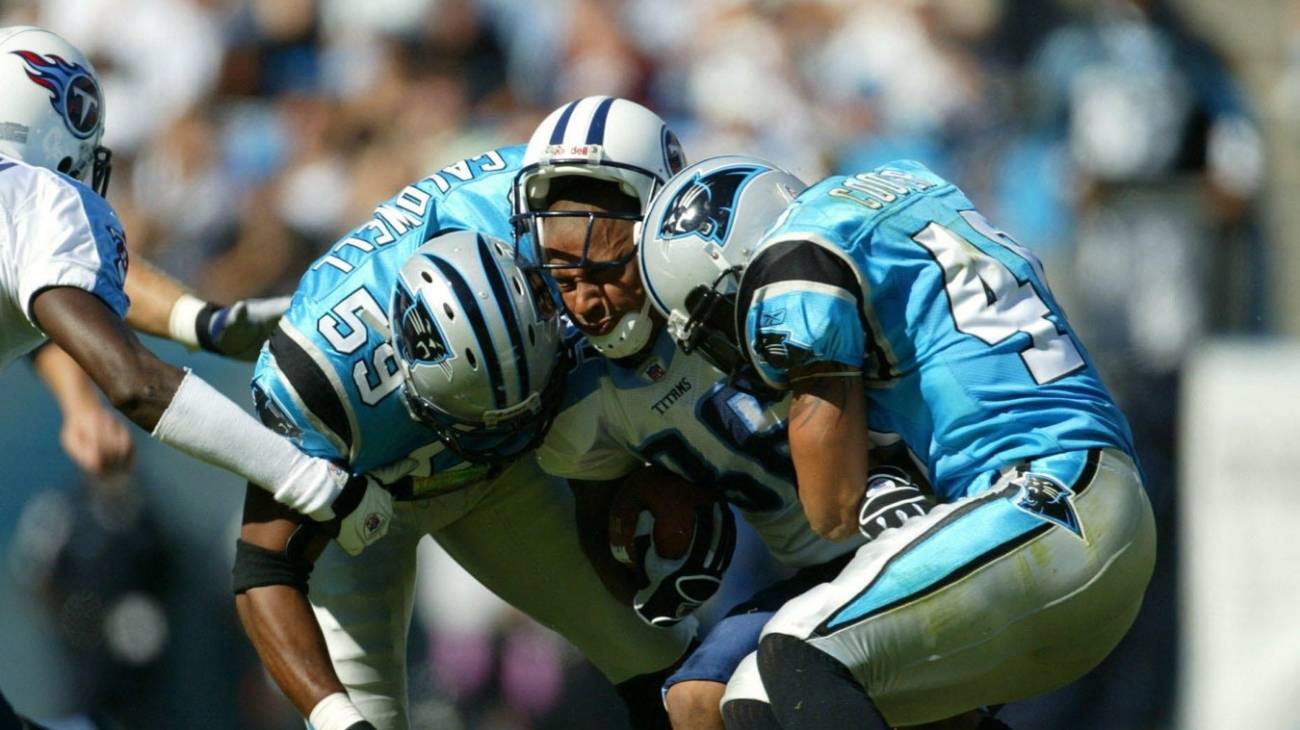- What are the most common types of injuries when playing football?
- Best products for football injury recovery
- How to prevent injuries when practicing football?
- How to apply the RICE therapy to treat first aid injuries in football?
- When should we go to a specialist for the treatment of injuries in football players?
Football is one of the sports we love the most in North America for its enormous tactical depth, as well as its tremendous intensity and dynamism. There is no doubt that it is one of the disciplines that demands the most from its athletes, since in every collision with the opponent and in every run to the end zone the muscles and joints are taken to the extreme.
This means that each athlete is exposed to a large number of injuries, which we will address below, as well as the best methods of prevention and the application of the RICE therapy to treat ailments that may occur during a football match.
What are the most common types of injuries when playing football?
This sport is one of the most intense disciplines in the world, so a total preparation of every muscle and joint is required. Otherwise, you run the risk of suffering from any of the following injuries that can keep any player out of action for several weeks.
Dislocated shoulder
A very common injury that occurs due to the impacts received especially by running backs to slow them down in their attempt to reach the end zone, or by quarterbacks to prevent them from making that millimetric pass they usually make in every game. Such impacts cause the head of the humerus to come out of the scapular cavity, leaving the shoulder joint injured.
In most cases, the shoulder can be mechanically brought back to its initial position, but if the impact is very violent, there is a possibility that the muscles and ligaments of the rotator cuff may be affected. Therefore, medical tests should always be performed to know the extent of the injury accurately.
Clavicle fracture
Another injury resulting from opposing tackles, this is especially common in running backs and quarterbacks. Although this area is very well protected by the equipment, a tackle can be so strong that the impact reaches the clavicle and fractures it partially or totally.
The player will immediately feel severe pain in the trapezius muscles and lower neck, in addition to not being able to move freely the shoulder connected to the affected clavicle. It is a delicate injury that must be completely healed or it could generate damages in some cervical nerves that limit the performance for several weeks or months.
Whiplash
A tackle can generate the same force that is generated in a traffic accident, causing the neck of the player who receives it to move from one side to the other in a very violent way, injuring the muscles and ligaments of the neck. Running backs are the most likely to receive this injury as they are forcefully stopped at high speed while heading for the end zone.
Immediately, severe pain will be felt, followed by numbness in the neck, especially in the cervical area. Although it is not a serious injury in principle, the joint should be immobilized immediately to prevent the affected muscles from tearing, or in the worst case scenario also affecting an important nerve and aggravating the condition.
Brain contusions
It is estimated that 99% of professional football players suffer an injury of this type according to NFL data, and possibly in amateur players the figure is similar. A cerebral contusion occurs when, due to a strong blow to the head, the brain collides with one of the inner walls of the skull, which causes damage to its functioning.
Depending on the intensity of the blow, the brain damage will be mild or severe, ranging from subdural hematomas to chronic traumatic encephalopathies. The latter injuries are more likely to occur in players who occupy the defensive line and are among the most serious that can occur because it is a degenerative condition.
Rotator cuff tendinitis
An injury that most often affects quarterbacks who must use their shoulder muscles to make accurate long-distance passes into the hands of running backs for touchdowns in every game. This injury consists of irritation of the supraspinatus, subscapularis or infraspinatus muscles or tendons that make up the rotator cuff, usually as a result of constant use of the shoulder.
It can generate pain and other symptoms such as numbness. In spite of that, it is undoubtedly one of the slightest injuries that a football player can suffer since it is rarely the product of some impact with an opponent during a match, and with a conservative treatment it can be cured without problems.
Knee sprain
One of the injuries that most affects football runners is the sprained knee, which can be caused by losing balance during a high-speed run to touchdown, or by a violent tackle by an opponent that forces the knee to perform a movement for which it is not naturally capable.
This generates partial or total tears in the knee ligaments, being the cruciate ligaments the most affected by these actions. Sprains can be of three degrees that are determined according to the damage received by the aforementioned soft tissues.
Rupture of the anterior cruciate ligament
The worst injury for any athlete in any discipline. It occurs when a strong sprain causes this ligament to break completely. Immediately a strong pain is felt as a result of the rupture that will be accompanied by inflammation and internal edema.
This injury can affect any football player, although it is quarterbacks and running backs, especially the latter, who suffer the most from it since they take most of the tackles in each game. The only way to solve this ailment is with surgery in which the torn ligament is replaced by a tissue graft, which will lead to a recovery time of up to 6 months.
Achilles Tendonitis
An injury that especially affects runners as it is generated by overuse wear and tear of the Achilles tendon, the tendon that connects the heel and calf and allows the foot to move up or down. The symptoms are pain and limitations to move the affected foot.
It usually heals with the use of cryotherapy and compression garments such as ankle braces or elastic bands. Recovery time is between 7 and 15 days. It must heal well, otherwise there is a risk of suffering a total tear of the tendon.
Best products for football injury recovery
Bestseller
-
2 Calf Compression Sleeve (Black/Gray)
$19.95 -
2 Calf Compression Sleeve (Green/Navy)
$19.95 -
2 Calf Compression Sleeve (Pink/Bordeaux)
$19.95 -
2 Knee Compression Sleeve (Black/Gray)
$19.95 -
2 Knee Compression Sleeve (Green/Navy)
$19.95 -
2 Knee Compression Sleeve (Pink/Bordeaux)
$19.95 -
2 Thigh Compression Sleeve (Black/Gray)
$19.95 -
2 Thigh Compression Sleeve (Green/Navy)
$19.95 -
2 Thigh Compression Sleeve (Pink/Bordeaux)
$19.95 -
Acupressure Mat and Pillow (Black/Gray)
$49.95 -
Acupressure Mat and Pillow (Green/Navy)
$49.95 -
Acupressure Mat and Pillow (Pink/Bordeaux)
$49.95 -
Acupressure Pillow (Black/Gray)
$29.46 -
Acupressure Pillow (Green/Navy)
$29.46 -
Acupressure Pillow (Pink/Bordeaux)
$29.46 -
Back Support Belt (Black)
$34.95 -
Back Support Belt (Green)
$34.95 -
Back Support Belt (Pink)
$34.95 -
Foot Massage Roller for Plantar Fasciitis (Black)
$19.95 -
Foot Massage Roller for Plantar Fasciitis (Green)
$19.95 -
Foot Massage Roller for Plantar Fasciitis (Pink)
$19.95 -
Gel Eye Mask for Puffy Eyes (Gold/Black)
$11.95 -
Gel Eye Mask for Puffy Eyes (Orange/Pink)
$11.95 -
Gel Eye Mask for Puffy Eyes (Purple/Turquoise)
$11.95 -
High Density Foam Roller for Muscle (Black/Gray)
$29.95 -
High Density Foam Roller for Muscle (Green/Navy)
$29.95 -
High Density Foam Roller for Muscle (Pink/Bordeaux)
$29.95 -
Ice Massage Roller Ball (Black)
$39.95 -
Ice Massage Roller Ball (Green)
$39.95 -
Ice Massage Roller Ball (Pink)
$39.95 -
Microwave Heating Pad for Back Pain Relief (Extra Large) (Hearts)
$29.95 -
Microwave Heating Pad for Back Pain Relief (Extra Large) (Oxford)
$29.95 -
Microwave Heating Pad for Back Pain Relief (Extra Large) (Sport)
$29.95 -
Microwave Heating Pad for Neck & Shoulder Pain Relief (Hearts)
$24.95 -
Microwave Heating Pad for Neck & Shoulder Pain Relief (Oxford)
$24.95 -
Microwave Heating Pad for Neck & Shoulder Pain Relief (Sport)
$24.95 -
Microwave Heating Pad for Neck Pain Relief (Hearts)
$19.95 -
Microwave Heating Pad for Neck Pain Relief (Oxford)
$19.95 -
Microwave Heating Pad for Neck Pain Relief (Sport)
$19.95 -
Pack 2 In 1 Foam Roller High + Soft Density (Black/Gray)
$29.95 -
Pack 2 In 1 Foam Roller High + Soft Density (Green/Navy)
$29.95 -
Pack 2 In 1 Foam Roller High + Soft Density (Pink/Bordeaux)
$29.95 -
Shoulder Support Brace (Black)
$24.95 -
Shoulder Support Brace (Green)
$24.95 -
Shoulder Support Brace (Pink)
$24.95 -
Soft Density Foam Roller for Recovery (Black)
$29.95 -
Soft Density Foam Roller for Recovery (Green)
$29.95 -
Soft Density Foam Roller for Recovery (Pink)
$29.95 -
Trigger Point Massage Stick (Black)
$14.95 -
Trigger Point Massage Stick (Green)
$14.95 -
Trigger Point Massage Stick (Pink)
$14.95
How to prevent injuries when practicing football?
Although it is not easy to avoid injuries in this sport, it is possible to reduce the probability of suffering them if healthy habits are acquired to take maximum care of the state of shape of the most important ligaments and muscles.
Below you will learn the most efficient methods to prevent most football injuries, so that you can be at your best level free of ailments most of the year.
Warm-up
Warming up is the most important part of training and matches. In fact, it is estimated that over 60% of soft tissue injuries in football are caused by a poor warm-up. To warm up correctly, start with stretching and joint mobility exercises for the feet, ankles, knees and hips, and then move on to the upper body, always in an orderly fashion.
Once all the ligaments and muscles are stretched and mobilized, a light cardio session of about 10 or 15 minutes is performed to then start with the real training. In this way, the whole body is effectively conditioned to start with the specific training and tactical simulations that usually make up a day of practice in any professional or amateur team.
Cool down
Cooling down allows the muscles to better metabolize all the lactic acid that is generated after an intense training session, strengthening them so that they can better withstand future sessions. What is done in football is to close practice with several minutes of gentle jogging downhill until the player ends up walking the field.
After the heart rate is controlled, a stretching session of the muscles and joints is performed, starting with the lower body and ending with the whole body, just as it is done at the beginning of the warm-ups. In this way the muscles and other soft tissues relax and come to rest in a healthier way.
Equipment
Safety equipment is the best ally of any football player, since it reduces the percentage of injuries caused by tackles and falls on the field.
Whenever you enter the field you will need to have:
- The helmet: It is a special helmet that integrates a mask to keep the whole head protected. It is made of a hard material capable of withstanding up to 8G of force.
- Shoulder and chest protector: This is the players' armor, a structure capable of cushioning impacts on chests and shoulders.
- Arm protector: Defends your arm from intense blows that could fracture the humerus partially or completely.
- Rib protector: Two pads specially designed to prevent lethal fractures in these bones that are usually the most exposed during matches.
- Elbow protector: Protective garments that not only guard against impacts but also provide stability to the joint and reduce injuries due to wear and tear and repetitive use.
- Fanny pack: Another pair of pads that protect the kidneys from impacts that can cause detachment of internal organs.
- Coccyx protector: This protection provides a necessary defense to protect the lower end of the back from falls that can be very painful.
- Thigh protector: Padded protection to prevent hamstring contusions or tibia fractures due to strong impacts from opponents at the tackle.
- Knee pads: Like the elbow pads, they provide protection against impacts to the knee and stability to prevent injuries due to overuse of ligaments and tendons.
These are the defensive pieces of the players' "armor". The other pieces of equipment are:
- The jersey, which should cover the shoulder pads and arm protectors up to the elbow.
- Pants, which cover from the waist to the knees.
- Socks, which reach to the base of the knees.
- Shoes with cleats to avoid slipping on the field.
Nutrition and hydration
Nutrition is essential in this sport. The most important thing is the adequate consumption of calories, since in a single training session a high wear is performed. Football players often eat even during training sessions, ingesting up to 1000Kcal per session. This makes the caloric intake rises to 3500Kcal or 4500Kcal per day, depending on the player's weight
The diet should be made up of 50-60% carbohydrates, 20-30% of unsaturated fats avoiding trans fats and processed food, and between 20-30% of high biological value proteins from meats such as fish, chicken or beef that do not contain much fat.
As for hydration, water should be consumed every 30 or 40 minutes outside training sessions and matches, and during them, it is preferable to opt for energy drinks rich in electrolytes. This will ensure that all soft tissues are prepared to withstand the demands of this sport.
Fitness
Football is possibly the sport where we can find the greatest diversity of physical complexion, since no matter your build, height or weight, there will always be a position on the field where some of your qualities are needed. However, this does not mean that you should not be in good shape, as each position has different demands.
Below you will learn about the most suitable physical qualities for each player in each position on the field:
- Quarterback: Preferably a person with a certain height to have a better vision over the opponent's defense, as well as strong arms and legs that allow him to make precise passes and not lose the ball to any opponent's tackle.
- Wide Receiver: He must be a fast and agile player to make effective releases and be able to catch the quarterback's passes. For this reason, it is not necessary to have a muscular build.
- Running back: Running backs receive short passes from the quarterback and must run to move the team forward. This means that they must be fast, but also strong enough to break through the opposing blockers.
- Tight End: They must be fast and also strong since they are mainly in charge of protecting the running back or the quarterback when they run with the ball to advance.
- Center: He is the one who gives the pass back to the quarterback, and must be very strong to help in defense and prevent him from being intercepted or tackled.
- Offensive Guard: These players must be strong and athletic because they are in charge of protecting the quarterback and opening spaces for the running backs to run.
As for the defensive positions, defensive linemen, Guards, Tackles, Linebackers and Safetys, must be strong and resistant to block the opponent's advance and above all try to bother the opposing Quarterback as much as possible. Only the Cornerbacks, who are in charge of marking the Wide Receivers, can sacrifice a little muscle to gain speed and prevent them from receiving the passes intended for them.
Recovery therapies
Once an injury has been suffered, certain therapies can be used to stimulate a rapid recovery of the affected tissues as much as possible.
The most important alternative therapies that we can mention are the following:
- Sports massage: Consists of massaging the muscles to improve blood circulation, release tension and stimulate the regeneration of fibers in muscle injuries.
- Use of hot and cold therapies: Consists of the application of cold, to relieve pain or reduce inflammation, or heat to improve blood circulation and relax muscles and joints after an injury. Hot/cold gel packs can be used for this purpose.
- Use of compression garments: Consists of applying pressure on joints and muscles to improve blood circulation and maintain body temperature of injured tissues to create an optimal environment for early recovery.
- Use of acupressure therapies: Therapy based on the application of pressure with the fingertips on certain points of the body in order to release tension and stimulate cell regeneration in a 100% natural way.
- Use of thermotherapy and cryotherapy: Consists of applying cold or heat but in a more precise way, using extreme temperatures to stimulate the soft tissues of the body so that the fibers and cells that compose them heal faster.
How to apply the RICE therapy to treat first aid injuries in football?
The RICE therapy is a series of steps that people should follow to treat injuries during the first minutes after they occur in order to reduce and prevent further damage.
This method has been updated to the PRICE therapy, which consists of the following steps:
- Protection: The injured area should be immobilized so that it does not receive any damage that would make the injury in question more serious.
- Rest: The injured area should be taken out of use to allow the tissues to rest and stabilize as much as possible, so that there is no risk of post-injury damage that would aggravate the diagnosis.
- Ice: Ice should be applied to the injury with the intention of providing an analgesic and anti-inflammatory effect that allows some relief to the player.
- Compression: Pressure is applied to the injury in order to keep it deflated after removing the ice from it, as well as to keep the temperature stable.
- Elevation: Depending on the injured body part, the injury is elevated above the level of the heart to reduce the blood supply to the injured part of the body and help the injured tissues to deflate.
When should we go to a specialist for the treatment of injuries in football players?
While there are injuries that can be relieved from home with rest, in other cases it will be necessary to go to a specialist for a more complete diagnosis of the injury just suffered. More so in football where most of them occur due to a strong tackle by the opponent.
These cases can be divided into the following:
- Serious injuries: Those resulting from a strong blow in which there has been a bone fracture or a very violent sprain in the ankle or knee joints. As well as also in cases in which an inflammation is noticed that after 48 hours has not been reduced and prevents the mobility with freedom of a limb.
- Chronic injuries: If after a couple of weeks a sharp pain persists in a joint, it is evident that something strange is happening, so you should see a specialist to find out its causes. Other cases are when there are chronic problems such as cartilage wear due to osteoarthritis or constant headaches and headaches.
Another scenario where it is necessary to go to the doctor is when suffering some blow to the head that generates a loss of consciousness, as it could have caused serious damage to the brain that is important to detect in time to avoid a problem that affects the quality of life of the player for the rest of the same.
References
- Saal, J. A. (1991). Common American football injuries. Sports medicine, 12, 132-147. https://link.springer.com/article/10.2165/00007256-199112020-00005
- Kelly, B. T., Barnes, R. P., Powell, J. W., & Warren, R. F. (2004). Shoulder injuries to quarterbacks in the national football league. The American journal of sports medicine, 32(2), 328-331. https://journals.sagepub.com/doi/abs/10.1177/0363546503261737
- Pellman, E. J., Viano, D. C., Casson, I. R., Arfken, C., & Powell, J. (2004). Concussion in professional football: Injuries involving 7 or more days out—Part 5. Neurosurgery, 55(5), 1100-1119. https://journals.lww.com/neurosurgery/Abstract/2004/11000/Concussion_in_Professional_Football__Injuries.14.aspx
- Bradley, J. P., Klimkiewicz, J. J., Rytel, M. J., & Powell, J. W. (2002). Anterior cruciate ligament injuries in the National Football League: epidemiology and current treatment trends among team physicians. Arthroscopy: The Journal of Arthroscopic & Related Surgery, 18(5), 502-509. https://www.sciencedirect.com/science/article/abs/pii/S0749806302348588
- Brophy, R. H., Wright, R. W., Powell, J. W., & Matava, M. J. (2010). Injuries to kickers in American football: the National Football League experience. The American journal of sports medicine, 38(6), 1166-1173. https://journals.sagepub.com/doi/abs/10.1177/0363546509357836
- Yang, J., Cheng, G., Zhang, Y., Covassin, T., Heiden, E. O., & Peek-Asa, C. (2014). Influence of symptoms of depression and anxiety on injury hazard among collegiate American football players. Research in sports medicine, 22(2), 147-160. https://www.tandfonline.com/doi/abs/10.1080/15438627.2014.881818
- Luke, A. C., Bergeron, M. F., & Roberts, W. O. (2007). Heat injury prevention practices in high school football. Clinical journal of sport medicine, 17(6), 488-493. https://journals.lww.com/cjsportsmed/Abstract/2007/11000/Heat_Injury_Prevention_Practices_in_High_School.9.aspx
- Gacek, M. (2015). Association between self-efficacy and dietary behaviours of American football players in the Polish Clubs in the light of dietary recommendations for athletes. Roczniki Państwowego Zakładu Higieny, 66(4). https://agro.icm.edu.pl/agro/element/bwmeta1.element.agro-4c51ea03-3e22-45c6-bf0d-3c214d929a81
- Abbey, E. L., Wright, C. J., & Kirkpatrick, C. M. (2017). Nutrition practices and knowledge among NCAA Division III football players. Journal of the International Society of Sports Nutrition, 14(1), 13. https://www.tandfonline.com/doi/full/10.1186/s12970-017-0170-2
- Smart, B. J., Haring, R. S., Asemota, A. O., Scott, J. W., Canner, J. K., Nejim, B. J., ... & Schneider, E. B. (2016). Tackling causes and costs of ED presentation for American football injuries: a population-level study. The American journal of emergency medicine, 34(7), 1198-1204. https://www.sciencedirect.com/science/article/abs/pii/S0735675716001649




















































































